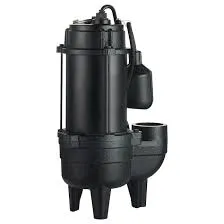Corsican
- Afrikaans
- Albanian
- Amharic
- Arabic
- Armenian
- Azerbaijani
- Basque
- Belarusian
- Bengali
- Bosnian
- Bulgarian
- Catalan
- Cebuano
- Corsican
- Croatian
- Czech
- Danish
- Dutch
- English
- Esperanto
- Estonian
- Finnish
- French
- Frisian
- Galician
- Georgian
- German
- Greek
- Gujarati
- Haitian Creole
- hausa
- hawaiian
- Hebrew
- Hindi
- Miao
- Hungarian
- Icelandic
- igbo
- Indonesian
- irish
- Italian
- Japanese
- Javanese
- Kannada
- kazakh
- Khmer
- Rwandese
- Korean
- Kurdish
- Kyrgyz
- Lao
- Latin
- Latvian
- Lithuanian
- Luxembourgish
- Macedonian
- Malgashi
- Malay
- Malayalam
- Maltese
- Maori
- Marathi
- Mongolian
- Myanmar
- Nepali
- Norwegian
- Norwegian
- Occitan
- Pashto
- Persian
- Polish
- Portuguese
- Punjabi
- Romanian
- Russian
- Samoan
- Scottish Gaelic
- Serbian
- Sesotho
- Shona
- Sindhi
- Sinhala
- Slovak
- Slovenian
- Somali
- Spanish
- Sundanese
- Swahili
- Swedish
- Tagalog
- Tajik
- Tamil
- Tatar
- Telugu
- Thai
- Turkish
- Turkmen
- Ukrainian
- Urdu
- Uighur
- Uzbek
- Vietnamese
- Welsh
- Bantu
- Yiddish
- Yoruba
- Zulu
Telephone: +86 13120555503
Email: frank@cypump.com
Dec . 20, 2024 10:54 Back to list
'exploring the efficiency and applications of mixed flow ...'
Exploring the Efficiency and Applications of Mixed Flow Systems
In recent years, the engineering and industrial sectors have seen a significant shift towards the adoption of mixed flow systems. These systems, blending elements from both traditional and advanced flow techniques, have proven efficient and versatile across various applications. This article delves into the core aspects of mixed flow systems, highlighting their efficiency, operational mechanisms, and diverse applications.
Understanding Mixed Flow Systems
Mixed flow systems integrate characteristics of both axial and radial flow systems. In axial flow systems, fluids move parallel to the axis of the pump or turbine, while in radial flow systems, the movement is perpendicular to the axis. By combining these two approaches, mixed flow systems benefit from the strengths of both types, offering enhanced performance efficiency and broader application potential.
One of the key advantages of mixed flow systems is their ability to handle large volumes of fluids while maintaining high energy efficiency
. This makes them particularly suitable for applications that require the movement of water or other fluids over considerable distances or through complex networks of pipes and channels.Efficiency in Mixed Flow Systems
The efficiency of mixed flow systems comes from their unique design and operational principles. These systems utilize a combination of impellers and vanes that facilitate a more streamlined flow, reducing energy losses typically associated with traditional systems. This design minimizes turbulence and cavitation, leading to smoother transitions and improved overall efficiency.
'exploring the efficiency and applications of mixed flow ...'

Moreover, mixed flow systems can be tuned to accommodate varying operational conditions. This adaptability allows for optimization based on specific requirements, such as varying fluid densities, flow rates, and system pressures. In industries where fluid dynamics are critical, such as in chemical processing or power generation, the ability to adjust these parameters without substantial redesign is a significant advantage.
Diverse Applications
The versatility of mixed flow systems is evident in their widespread applications across multiple industries. In the water treatment industry, for example, mixed flow pumps are extensively used to move water through treatment facilities. Their efficiency in handling large volumes of water while maintaining energy savings makes them an ideal choice for municipal water supply systems.
In the manufacturing sector, mixed flow systems play a critical role in process engineering. They are used for transporting chemicals, slurries, and other materials where precise flow control is necessary. The reduced energy consumption and increased lifespan of equipment often translate into substantial cost savings over time.
Additionally, mixed flow systems are finding applications in renewable energy, particularly in the design of hydro turbines. These turbines exploit the kinetic energy of flowing water, and mixed flow designs allow for more efficient energy conversion, helping to meet the increasing demand for sustainable energy solutions.
Conclusion
The exploration of mixed flow systems reveals significant advancements in fluid dynamics that are reshaping industrial practices. Their efficient design not only improves operational performance but also contributes to sustainability efforts by reducing energy consumption across various applications. As industries continue to evolve and demand more efficient systems, the importance of mixed flow technology will undoubtedly grow, paving the way for innovative solutions that cater to an ever-changing landscape. Whether in water treatment, manufacturing, or renewable energy generation, mixed flow systems are proving to be a crucial component of modern engineering and industrial practices.
-
Custom Drilling Mud and Slurry Pump Supplier - High Efficiency, Tailored Solutions
NewsJun.10,2025
-
Supply Vertical Submersible Sewage Pump High-Efficiency WQ/QW Pumps Supplier
NewsJun.10,2025
-
Premium Sewage Ejection System & Pumps Efficient Waste Removal
NewsJun.09,2025
-
Premium Wholesale Slurry Pump Impellers Durable & Efficient Slurry Handling
NewsJun.09,2025
-
Top Sewage Pump Companies Durable Industrial Solutions for Efficiency
NewsJun.09,2025
-
Heavy Duty Slurry Pumps - OEM High Performance & Bulk Wholesale
NewsJun.09,2025










